
Hoi An Ancient Town and 1001 things you might not know
1. Where is Hoi An Ancient Town located?
Hoi An Ancient Town, Vietnam, like a quiet ancient painting, is nestled beside the peaceful Thu Bon River, 30km south of Da Nang. This place is considered a precious gem of Vietnamese tourism, attracting tourists with its unique and impressive beauty.
Hoi An bears the mark of time with its moss-covered tiled roof houses, small winding roads and shimmering fanciful lanterns. Walking on the ancient streets, tourists seem to go back in time, returning to a simple and rustic old Hoi An.
Hoi An is a cultural intersection between Vietnam, China and Japan, this is clearly shown through the architectural works, specialty dishes and customs of the residents. Each ward of Hoi An has its own characteristics, creating a colorful and extremely unique picture.
With a favorable geographical location, Hoi An easily connects with other famous tourist destinations such as Hue and Da Nang, creating an exciting and memorable exploration journey.
See more: 40+ tourist attractions in Hoi An
Hoi An, a shimmering pearl by the Thu Bon River, will always be a destination that attracts tourists because of its ancient beauty, peace and vitality.
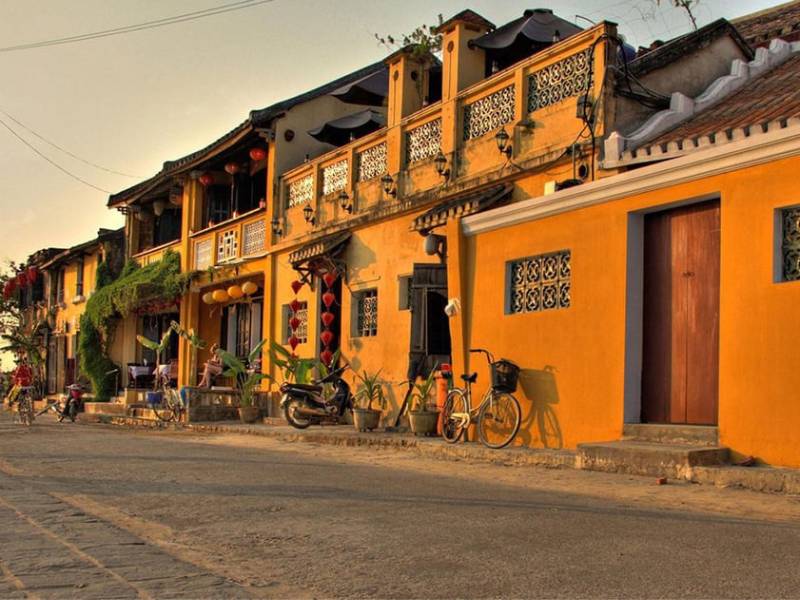
Hoi An is a cultural intersection between Vietnam, China and Japan
2. What is the English name of Hoi An Ancient Town, Vietnam?
This is the official name used in tourism documents, the ancient town's official website and international publications.
In addition, some other less common names include:
- Faifo: This is the name used by the French during the colonial period.
- Hoi An: This is the simple name of the ancient town, often used in daily communication.
However, Hoi An Ancient Town, Vietnam is the official and most widely used name to introduce Hoi An ancient town to international tourists. Hoi An possesses an enchanting beauty that makes anyone who comes here fall in love. This beauty is not only praised in the domestic media but also renowned worldwide. International tourists visiting Hoi An always have the best compliments for this place:
- "Hoi An is truly a very beautiful ancient city, perhaps the most beautiful place we have ever been to." "I love the bustling atmosphere here because I get to meet many people, The ambiance is very lively, lanterns shimmering everywhere. It's extremely beautiful." Sunita, Indian tourist.
- "Hoi An is a beautiful city with ancient houses, narrow winding streets and magical shimmering lanterns." John Smith, American tourist.
- "Seems like a watercolor painting; Hoi An's beauty is simply elegant." Marie Claire, French tourist.
Read more: Recreate the culture and history of ancient Hoi An.
3. How was Hoi An Ancient Town formed?
Hoi An Ancient Town, Vietnam is located downstream of Thu Bon River, in Quang Nam province, 30km away from Da Nang. It was established around the end of the 16th century where it was once the busiest international trading port in the 16th and 17th centuries, a place for the bustling exchange of goods for merchants among China, Japan and other Western countries.
In 1527, Mac Dang Dung won the throne of the Le dynasty, initiating the rule of the Mac Dynasty in Dong Kinh. It was not until after 1570 that Nguyen Hoang and his son Nguyen Phuc Nguyen gained control of Quang Nam, built citadels and developed the economy, turning Hoi An into the leading trading port in Southeast Asia.
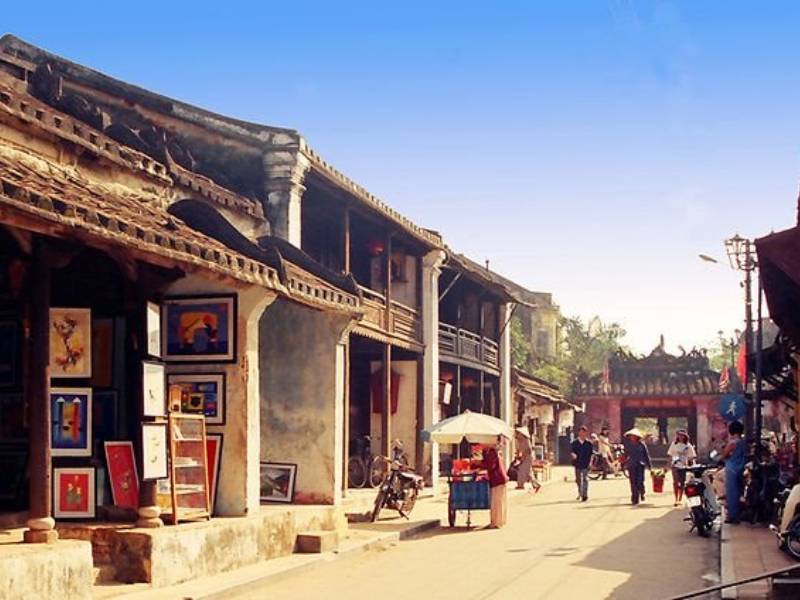
Hoi An was established around the end of the 16th century
Through historical events such as the Trinh Nguyen war, Hoi An still maintains its vibrant port position with Japanese and Chinese streets. Although heavily damaged after Lord Trinh occupied Quang Nam, Hoi An was revived within 5 years. However, its commercial activities are no longer as vibrant as before.
During the Nguyen dynasty, the policy of closing ports led to the decline of Dong Kinh port, causing Hoi An to fall into oblivion until 1980. In 1999, recognized by UNESCO as a "World Cultural Heritage Site", Hoi An became an attractive tourist destination, a vivid picture of historical revival and preservation, attracting tourists from over the world.
4. The meaning of the name Hoi An
The Chinese call this port town Hoai Pho due to its location on the banks of the Hoai River, a branch of the Thu Bon River flowing to Dai Chiem estuary. According to hypothesis, the name Hoai Pho was changed to FaiFo by Portuguese traders when they came here in the 16th century. According to Birdwood's records, the Portuguese began trading in Dang Trong in 1540 and turned FaiFo into their bustling trading center. At this time, FaiFo belonged to Hoi An commune (the name dates back to the Le dynasty, belongs to Quang Nam province, according to the book O Chau Can Luc by Duong Van An).
From the 17th century onwards, the name FaiFo or Hoai Pho, also known as Hai Pho (this name is less commonly used). During the French colonial period, the French still used FaiFo to call this port city, leading to them calling Hoi An town FaiFo.
The name "Hoi An" appeared in the 17th century, replacing the name "FaiFo port town" located within the territory of Hoi An commune.
5. Pictures of ancient Hoi An
Hoi An in previous centuries was always peaceful and ancient, with its green moss-covered street and gentle people. Let's take a look at ancient Hoi An through the following photographs:
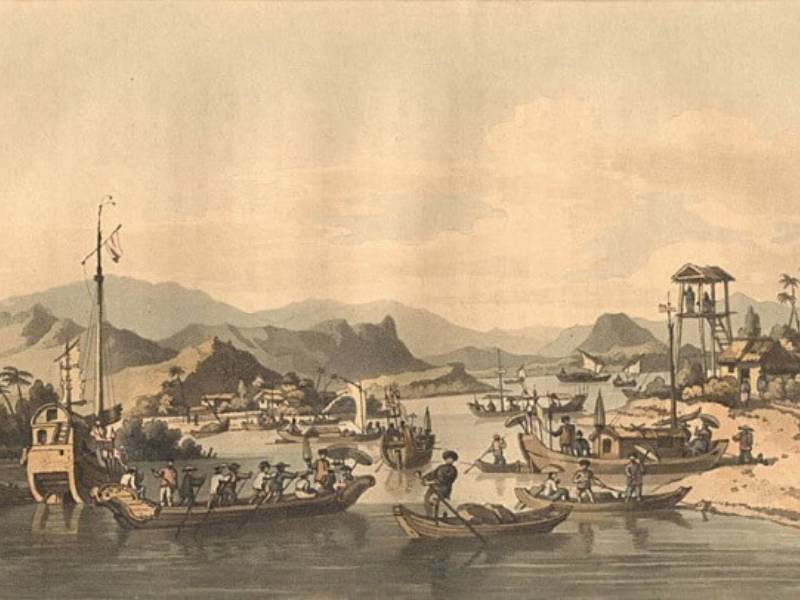
Old Hoi An port

Nguyen Thai Hoc Street corner in old Hoi An
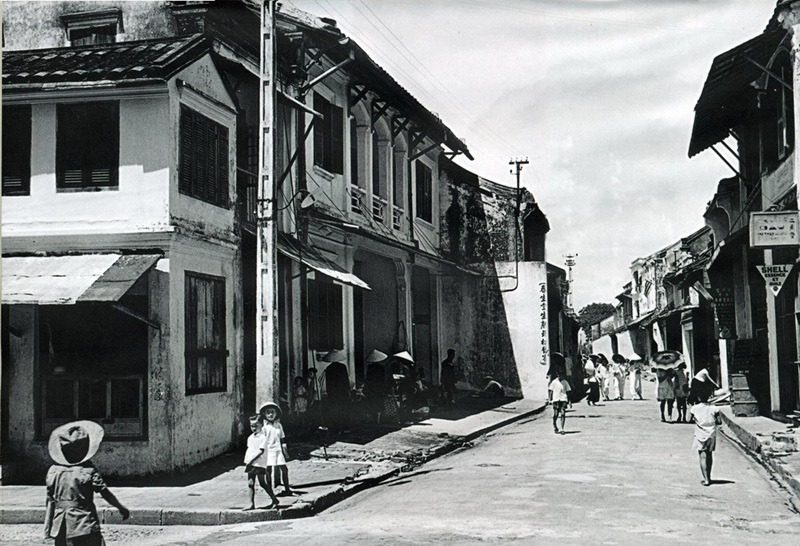
Hoi An Ancient Town, Vietnam in the 1930s and 1950s
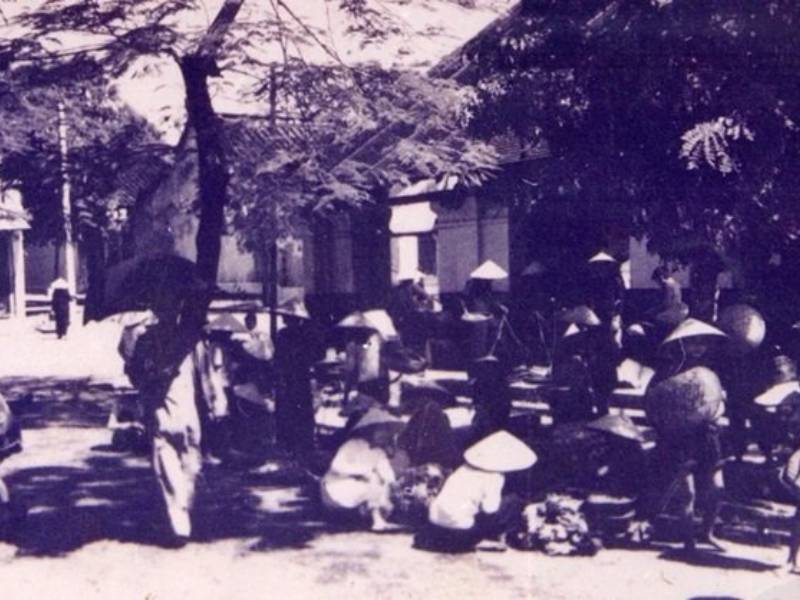
An old market of Hoi An Ancient Town, Vietnam
6. When has Hoi An Ancient Town been recognized as a World Cultural Heritage?
Hoi An Ancient Town, Vietnam was recognized by UNESCO as a World Cultural Heritage on December 4, 1999, at the 23rd session of the World Heritage Committee held in Marrakech, Morocco. Hoi An was honored by UNESCO as a World Cultural Heritage based on two important criteria:
Symbol of cultural interference: Hoi An is a unique physical testament to the interference and combination of diverse cultures through the ages against the backdrop of a bustling international trading port. This place preserves architectural imprints, beliefs, customs, and cuisine from many countries such as Japan, China, France and more, creating a unique cultural ensemble.
Preservation of Traditional Asian Port Town: Hoi An is a typical example of a well-preserved traditional Asian port town. It boasts a system of ancient houses, communal houses, pagodas, temples, assembly halls, etc., with unique architecture and small winding roads, bearing the imprint of time. Thanks to the preservation efforts of local residents and authorities, Hoi An retains its ancient beauty and significant historical value.
See more: Hoi An's top 10 most unique and unforgettable festivals.
With these two outstanding criteria, Hoi An has affirmed its position as a cultural heritage of particularly important value, contributing to enriching the world's cultural heritage treasure.
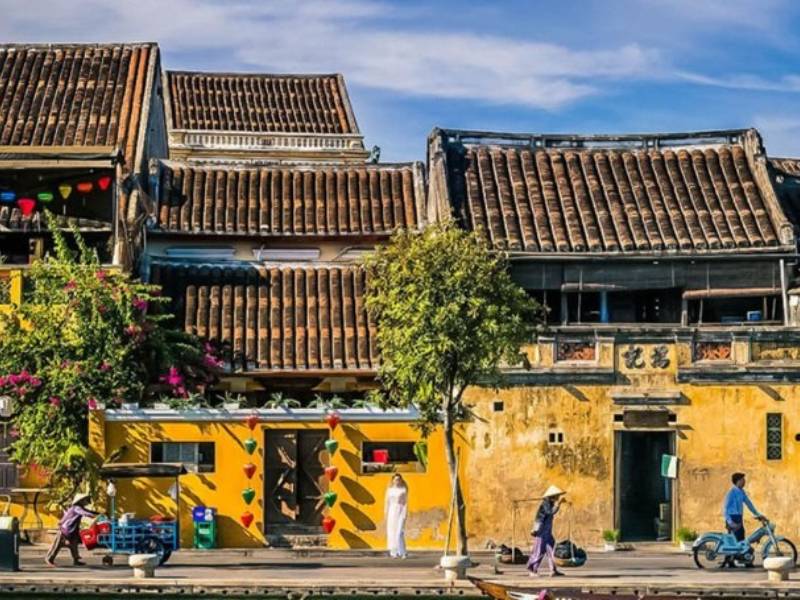
Hoi An Ancient Town, Vietnam was recognized as a World Cultural Heritage on December 4, 1999.
7. How long does it take to get to Hoi An Ancient Town?
From Da Nang, tourists will take different amounts of time to travel to Hoi An depending on the mode of transportation:
- Motorbike: It usually takes about an hour to get to Hoi An.
- Bus: Travel time to Hoi An is about 70–80 minutes.
- Car: The estimated travel time is 45–55 minutes.
However, travel time will depend on the speed of the vehicle, traffic and weather conditions.
8. Do tourists need to buy a ticket to visit Hoi An ancient town?
When visiting the ancient town, if tourists just go around the streets, take photos and go sightseeing, that's completely free. Tourists will have to buy the entrance tickets when they want to visit other heritage sites within the ancient town with prices of 80,000 VND/ticket for Vietnamese tourists and 120,000 VND/ticket for international tourists.
See more: The Hoi An show ticket buyer's guide: 5 essential tips.
9. What time does the ancient town close?
Hoi An Ancient Town, Vietnam doesn't have a set closing time. However, there are specific restrictions on vehicle access to protect the town's historical character and ensure pedestrian safety:
Vehicle Restrictions: From 8:30 AM to 11:00 AM and 3:00 PM to 9:30 PM (or 9:00 PM during the rainy season), motorized vehicles are not allowed within the Old Town area. During these times, you can explore the town on foot or by bicycle.
While the town itself remains open, many shops and businesses might have varying closing hours. For the best experience, visiting during the day or early evening is recommended. You can enjoy the town's charm, explore the historical sites, and indulge in the local cuisine before most places close.
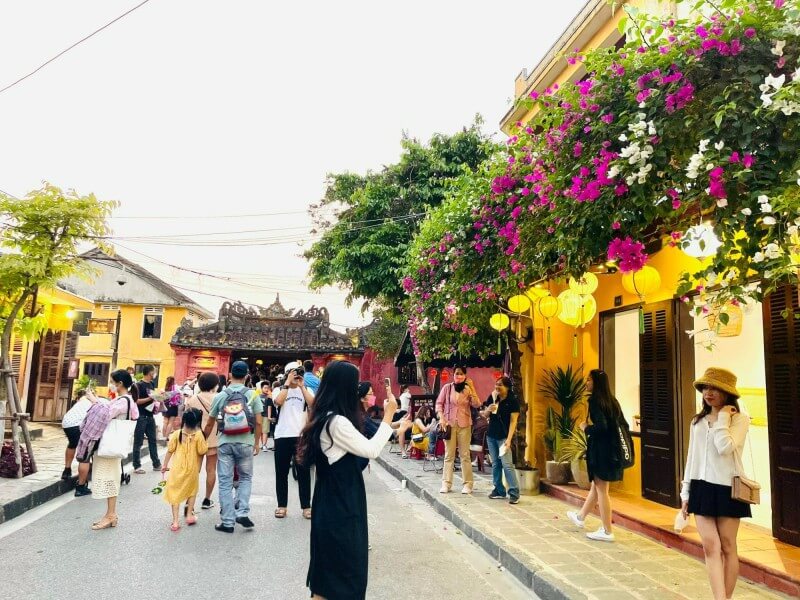
For the best experience, visiting during the day or early evening is recommended.
10. What to do in Hoi An?
Standing out on the map of the Central region, Hoi An is like a rustic, simple, and poetic painting. Whether day or night, Hoi An always "wears" a cloak of shimmering, magical beauty and captivating beauty. So what does Hoi An's ancient town have to offer?
Hoi An - Daytime beauty:
Walking on the beautiful, winding streets, admiring the ancient moss-covered houses, taking photos with colorful lanterns, discovering the lives of local residents, etc., tourists will be like stepping into another world.
Visit historical and cultural relics such as Cau Pagoda, Tan Ky ancient house, Phuc Kien Assembly Hall and more to learn about the golden past of Hoi An trading port.
Enjoy local specialties such as Cao Lau, Quang noodles, Phuong bread, etc., to fully feel the taste of Hoi An.
Experience the feeling of relaxation when taking a boat to drop flower lanterns on the romantic Hoai River, watching the sparkling ancient town at night.
Hoi An - Magical beauty at Night
When night falls, the ancient town takes on a magical beauty with shimmering lanterns.
Walking on the ancient town, tourists can participate in entertainment activities such as watching traditional art performances and shopping for souvenirs at handicraft stores.
Enjoy attractive street foods such as Vac cake, Beo cake, snails, etc.
Release lanterns and pray at the romantic Hoai River
Hoi An - A place to preserve beautiful moments
The ancient town is an ideal place for tourists to capture beautiful moments with unique photo spots. Tourists can take photos at Mót café, the golden alley opposite Faifo café, Cau Pagoda, ancient houses with bougainvillea trellises swaying in the wind, etc.
Finding beautiful small cafes, sipping a cup of coffee and watching the bustling ancient town is an experience not to be missed when coming to Hoi An.
Hoi An - Peaceful with traditional craft villages
It can be said that nowhere preserves long-standing and diverse traditional craft villages like Hoi An. Accordingly, you can visit and admire the activities of creating traditional products in craft villages, such as:
- Tra Que Vegetable Village: A place that provides clean vegetables and specialties for Hoi An, tourists can visit and experience growing vegetables using traditional methods.
- Kim Bong Carpentry Village: Renowned for its long-standing traditional carpentry, this village continues to create unique architectural works and exquisite handicrafts for Hoi An.
- Thanh Ha Pottery Village: Preserving the secrets of traditional pottery making, creates ceramic products with extremely unique glaze colors, bearing the mark of Cham ethnic culture. When coming here, tourists will witness skilled artisans making extremely sophisticated and beautiful fine art ceramic products. Thanh Ha ceramics are a perfect choice as gifts and souvenirs for your trip to Hoi An.
- Kim Bong Village with Phuoc Kieu Bronze Casting Craft: Famous for its traditional bronze casting, this village has produced delicate bronze statues, bronze paintings and numerous architectural structures made of bronze.
- Cam Ha Village (bamboo - nipa coconut): the place where handicraft products from bamboo and nipa coconut are produced and is an attractive eco-tourism destination with vast nipa palm forests.
No matter who you are, traveling alone or with family or friends, Hoi An can meet your needs and interests. Come to Hoi An to explore the simple, rustic and poetic beauty of this place, to keep for yourself beautiful and memorable moments.
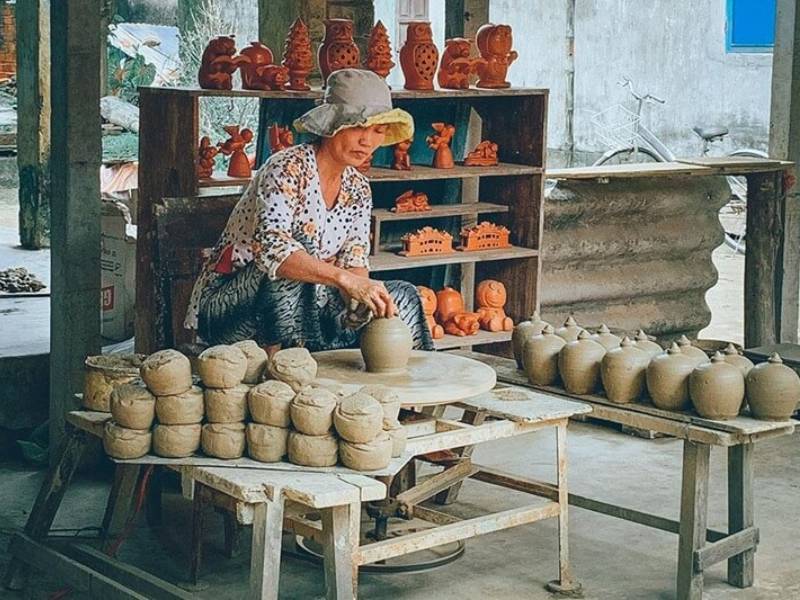
Thanh Ha Pottery Village
The Cau Pagoda
The Cau Pagoda is always on the list of favorite places of tourists when coming to Hoi An. This pagoda has Japanese-style architecture with a roof made of wood and many unique decorative motifs.
Explore Hoi An Memories Land
Hoi An Memories Land is an indispensable piece of Hoi An tourism. In 2022, this place was honored as "The world's leading entertainment destination". By 2023, Hoi An Memories Land will continue to be named in the category "World's leading cultural and entertainment tourism complex". Coming to Hoi An Memories Land, tourists will be fascinated with 1001 check- in destinations with chill views.
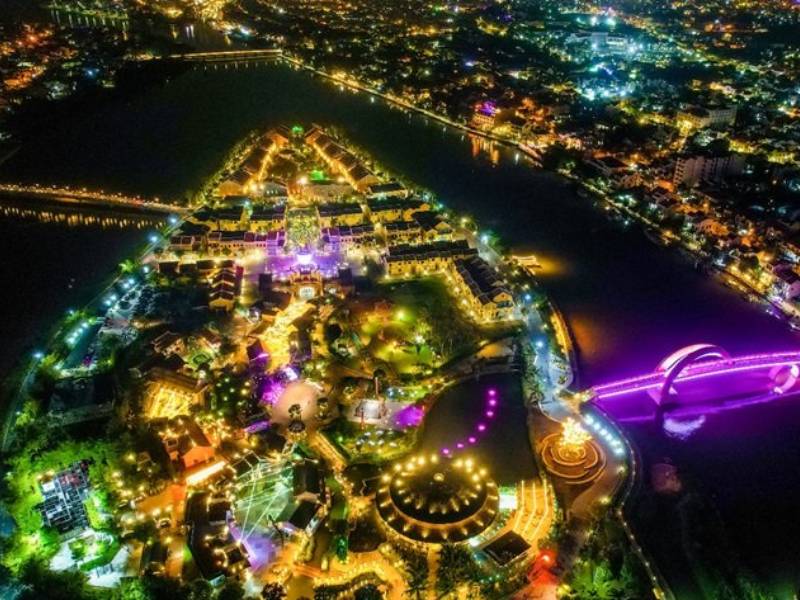
Hoi An Memories Land sparkles at night
The Hoi An Impression Park is located on Hoi An Memories Land. Tourists can explore the unique architectural structures of ancient Hoi An here, enjoy over 20 intriguing mini-shows on the premises, along with the Hoi An Memories Show - acclaimed as one of the world's most beautiful scene shows. For culinary enthusiasts, the variety of famous specialties here will not disappoint.
Moreover, tourists can opt for a stay at Hoi An Memories Resort & Spa - the most luxurious resort in Hoi An, for complete relaxation with a wide range of enticing services.
Hoi An Market
Visiting Hoi An market and enjoying Hoi An specialties will be the perfect choice for a visit to the ancient town. Some delicious dishes at Hoi An market that tourists love include: Quang noodles, Cao Lau, mussels with rice cakes, corn sweet soup, etc. Tourists can also find and choose to buy lovely souvenirs at Hoi An market.
See more: What souvenirs should you buy when traveling to Hoi An?
Exploring Tan Ky Ancient House
Tan Ky Ancient House, with a history spanning over 200 years, is one of the oldest houses in Hoi An. The architecture of Tan Ky Ancient House is a harmonious blend of three cultures: Chinese, Japanese, and Vietnamese. Despite having stood for centuries, Tan Ky Ancient House has been remarkably preserved. It serves as a fascinating destination for tourists who enjoy exploring ancient architectural marvels.
11. When is the best time to travel to Hoi An?
If you're planning a trip to Hoi An, choosing the right season is crucial to have a great experience. Hoi An has a tropical climate, with four distinct seasons: spring, summer, autumn, and winter.
The weather in Hoi An is quite mild, without the cold winter like in the North and the summer is not excessively hot like in the South. Spring and autumn are two suitable seasons to explore the ancient town, with pleasant weather and moderate temperatures. Winter is also quite ideal with temperatures ranging from 18-23°C, cool but refreshing.
The best time to visit Hoi An is from January to September, when the weather is good. The hot season falls between April and August. However, October and November may have rain, and storms. December is slightly chilly but still pleasant and comfortable.
Depending on the hobby, tourists can choose the most suitable time to make their trip to Hoi An more enjoyable and complete.

The best time to visit Hoi An is from January to September.
12. When does the Lantern Festival in Hoi An ancient town take place?
The Lantern Festival in Hoi An usually occurs on the 14th and 15th day of every lunar month, also known as the Full Moon day. On this day, thousands of lanterns will be released onto the Hoai River, giving a romantic and enchanting atmosphere in the ancient town.
Under the full moonlight, tourists can release small, beautiful lanterns onto the Hoai River, praying for peace and luck for themselves and their families. The sound of temple bells blends with traditional music, creating a peaceful and sacred atmosphere.
The Lantern Festival is not only a traditional cultural beauty of Hoi An but also a tourist attraction from around the world. It's an opportunity for tourists to experience local culture, immerse themselves in the festival atmosphere, and capture memorable moments.
Not only lanterns, but on this special occasion, sparkling lanterns are also lit, embellishing every street and small corner in the ancient town, creating a magical and vibrant scene. Coming here on this day, tourists feel like stepping into another world, where the light of hope and dreams spreads everywhere.
13. Discover the Hoi An real scene show
The Hoi An Memories show is an interesting artistic experience when coming to Hoi An, attracting the attention of both domestic and international tourists. The show was honored to be shown at Time Square in New York and received praise with many flattering words such as: the most eye-catching show and the most beautiful show in the world from the famous Reuters news agency.
Here are some basic details about the Hoi An real scene show - Hoi An Memories:
Location: Hoi An Memories Land, 200 Nguyen Tri Phuong Street (turn left), Hoi An City.
Duration: 60 minutes, from 8:00 PM to 9:00 PM. The show runs every day of the week except for Tuesdays.
Content: The show tells the ups and downs of Hoi An over its 400-year history, from the early days of reclamation to establish the hamlet to a modern and dynamic peaceful Hoi An.
The show consists of 5 main acts: Life, Wedding, Lamps & Sea, Integration, and Ao Dai. With a combination of sound, light, modern techniques, and 500 outstanding actors, the Hoi An real scene show - Hoi An Memories brings a visually stunning performance, leaving a deep impression on the audience.
Ticket prices range from 300,000 VND to 1,200,000 VND (adults) and from 120,000 VND to 600,000 VND (children).
What makes Hoi An Memories so special?
- Grand scale: With a vast stage spanning up to 25,000m2, intricate set design, and state-of-the-art technology.
- Unique content: Recreating Hoi An's 400-year history through emotionally captivating stories.
- Impressive performances: Featuring over 500 actors performing dance, sing, and music filled with emotion.
- Harmonious blend: Balancing traditional and modern culture, art, and technology.
- Five impressive performances: Life - Wedding - Lamps & Sea - Integration - Ao Dai.
Prestigious awards:
- Realistic scene show with the most spectacular stage in Vietnam (Guinness Record)
- The art performance with the most actors number (Guinness Record)
- Realistic scene show with the best cultural and historical value in Vietnam (The Guide Awards)
- Leading Historical Spectacle Show - An elaborate and meaningful historical spectacle show (Wanderlust Tips)

The real scene show - Hoi An memories show
Discover more: Why 'Hoi An Memories Show' Ranks Among the Top 10 Must-See Cultural and Art Performances in Vietnam?
Conclusion
Above are the interesting things of Hoi An ancient town that you might not have known. To truly understand this peaceful land, let’s make a plan on a journey here. Witnessing its beauty, savoring its delicacies and immersing yourself in the locals' lives will make you fall in love with this nostalgic ancient town even more!
-
Hotline: 1900 63 66 00
-
Press 1 For tickets
-
Press 2 For Customer Service
Latest news
![Over 30 Unique Things To Do In Hoi An Viet Nam [Monthly Update]](public/media/thumb/dao-ky-uc-hoi-an-la-mot-quan-the-du-lich-nghi-duong-van-hoa-nam-ngay-canh-pho-co1-90x90.jpg)
Over 30 Unique Things To Do In Hoi An Viet Nam [Monthly Update]

Where to Stay in Hoi An? Essential Tips for Choosing the Ideal Accommodation for First-Timers

Discover the Chinese Assembly Halls in Hoi An: Cultural Icons of the Ancient Town

Hoi An Specialties by Season: What to Eat Throughout the Year











![Over 30 Unique Things To Do In Hoi An Viet Nam [Monthly Update]](public/media/thumb/dao-ky-uc-hoi-an-la-mot-quan-the-du-lich-nghi-duong-van-hoa-nam-ngay-canh-pho-co1-358x223.jpg)


Comment